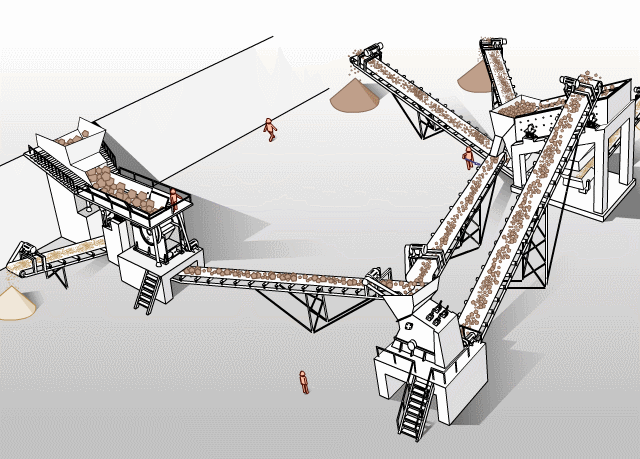Introduction:
The belt conveyor produced by our company has the advantages of large conveying capacity, simple structure, convenient maintenance and standardization of components. According to the technological requirements on conveying, the materials can be conveyed by single set or by integrated equipment with several sets or with other conveying equipment.

The belt conveyor is mainly composed of two end rollers and a closed conveyor belt on the tight sleeve. The drum that drives the conveyor belt to rotate is called the driving drum; the other drum that only changes the direction of movement of the conveyor belt is called the reversing drum. The driving drum is driven by a motor through a reducer, and the conveyor belt is driven by the friction between the driving drum and the conveyor belt. The driving rollers are usually mounted on the unloading end to increase traction and facilitate dragging. The material is fed into by the feeding end and falls on the rotating conveyor belt. The discharging end of the conveyor bag is unloaded by the friction of the conveyor belt.
Technical parameters:
Belt Width | Belt Length/Power (m/kW) | Belt Speed
(m/s) | Capacity (t/h) |
500 | ≤12/4 | 12-20/5.5 | 20-30/7.5 | 1.3-1.6 | 60-156 |
650 | ≤12/4 | 12-20/5.5 | 20-30/7.5 | 1.3-1.6 | 110-264 |
800 | 10-15/7.5 | 15-20/11 | 20-30/15-18.5 | 1.3-1.6 | 184-445 |
1000 | 10-15/11 | 15-23/15 | 23-32/22 | 1.3-2.0 | 288-696 |
1200 | 10-18/15 | 18-22/18.5 | 22-30/22-30 | 1.3-2.0 | 432-1048 |
1400 | 10-18/22 | 18-22/30 | 22-30/30-37 | 1.3-2.0 | 588-1427 |
